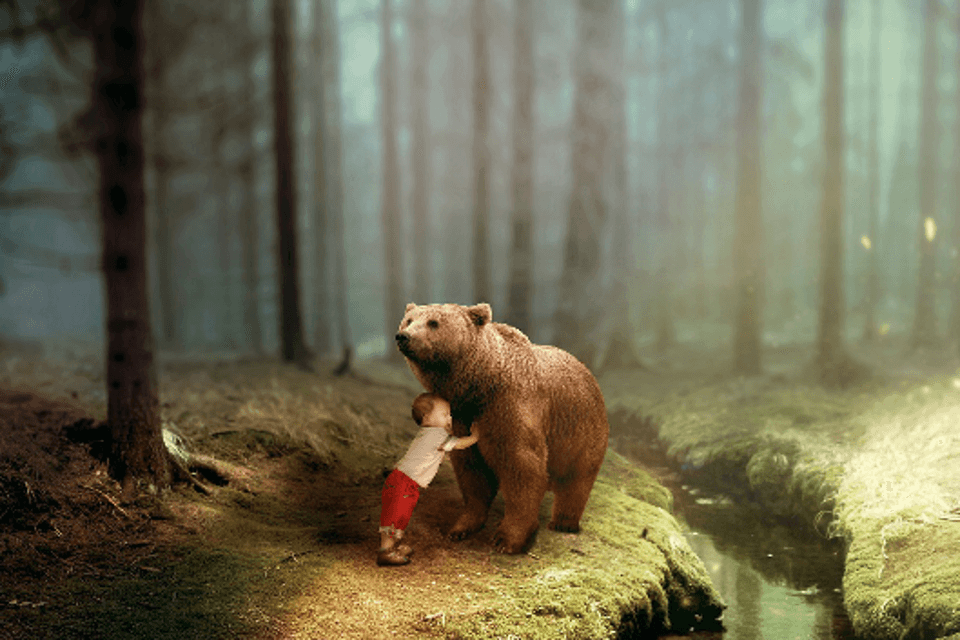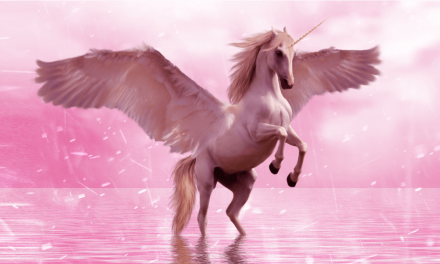In Part 5 of this series, we presented :
The Importance of Being Blue: Contrast and the Human Eye
– – –
Have you ever been afraid as a child? Sure you have. We all have. And what were we afraid of? In this post we will examine the importance of what I will here call a circle (or in 3d game art, a sphere) of protection.
But first, let’s lay the groundwork by outlining some general principles of artistic balance. Particularly, when it comes to size, shape, color, position, and recessivity. That is, an object’s tendency to recede into the background (or to become prominent in the foreground) of any given work of art.
And a lot of this is simply common sense. Just ask any child younger than 5 and he or she will tell you quite plainly that
• Large objects weigh more than little tiny ones,
• A ball weighs less than a block of wood (because a block of wood has corners and those corners must weigh something, right?),
• A bright red lollipop is better than a colorless one because you get more, and
• Birds weigh less when they are flying (or how else could they fly?).
And the funny thing is, the kids would be right. Large, blocky objects do weigh more. And, when it comes to red, you really do get more. And birds in flight weigh less. All of these things are true. At least in a visual or perceptive sense.
So, what’s the theory here? (Every subject has one or how else would they teach it in school? J )
Here’s the plain vanilla, blue-plate explanation:
1). When it comes to size, bigger really is better. Most of the time. Why? Because (all other things being equal) large objects in a painting, drawing, or photograph get our attention first. They “weigh” more in a visual sense.
2). Objects that are bounded by irregular (perhaps multi-faceted) shapes also “weigh” more. A girl as seen through a shattered window weighs more than the same girl before the window was broken. And if the window is round or oval, she weighs less than if the window were square or rectangular. Within reason that is, with all of these windows drawn in the same position and being of the same approximate size.
3). Color is a little more complicated. But not much. There are just 2 points to consider:
• Warm colors “weigh” more than cool ones. (And, just like the kid with the lollipop told us, red weighs the most.) And,
• Dark colors “weigh” more than light ones. (So, maybe the red lollipop could have weighed even more under different circumstances.)
4). And position in art is even more abstract. Or purely psychological.
As if drawn by gravity, heavy objects end up near the bottom of our canvas. Or at least, that’s what our real-world, cause-and-effect training tells us has happened. Actually, its the other way around. The egg coming before the chicken.
You see, the objects near the bottom of our canvas only seem heavier – not because they are or are not indeed heavier – but simply because we’ve placed them in a “heavy” zone of the canvas. The gravity-put-them-there-so-of-course-they’re-heavier zone.
5). Now, as to recessivity. All of the above factors (size, shape, color, and position) work together to make an object seem more or less important in a given work of art. And a part of either the foreground or the background of the image (or somewhere in between) to varying degrees. That is to say, more or less recessive. (And, incidentally, other factors such as visual occlusion also play a role here. But that’s a subject for another time.)
Ahem! That’s about enough on theory.
What about our circle (or in 3d game art, our sphere) of protection?
Well, have you ever seen or heard of Captain Kangaroo? The Magic Toy Shop? Or maybe, Mr. Rogers?
These experts with children and with children’s programming (And isn’t that where fantasy first takes root? In childhood?) have this one down cold. They know what makes children afraid. And likewise what puts them at ease.
Stories these practitioners have shared over the years feature imaginative (read “fantasy”) characters that, in my opinion, could easily be drawn in a circle or within the confines of a sphere. No “sharp edges”, as it were. Nothing protruding. Which should recall point #2 above: irregular (“pointy”) objects weigh more, and regular (“roundish”) objects weigh less.
Use of this principle (bounding a character by a circle or by a sphere) still allows a villain to be a villain, but somehow paints him or her in a softer, less threatening light. Think “Yosemite Sam” (from Saturday morning cartoons) and you’ll get the idea of what I’m talking about here. A feisty, shoot-em-up character that is comic, comic, comic. A child’s villain and not a monster hiding in the closet – um, well, I guess they did that too. With Monster’s Incorporated.
Soft, furry, lovable (but misunderstood) monsters – which, in most poses, could be bounded by a circle or a sphere. And kids loved them.
Why?
Exactly because they fit within a circle or sphere of protection! With nothing protruding. They had roundish faces and clumsy hands. And did not have long, knife-like teeth or nails. They were stuffed animals on the screen. They made mistakes. And had to work hard at being monstrous. How’s that for a circle or sphere of protection?
And, correct me if I’m wrong, but isn’t that the same movie where “Minions” were first introduced? Or was that Despicable Me? Either way, ditto on circles and spheres of protection.
It may seem funny, but it’s true. We can learn a lot about fantasy game art by stepping out of our typical environs and spending some time with the younger set. Our children and nieces and nephews and friends of friends. And, when we do, maybe we’ll recall a point or two about our own childhood. What made us afraid and what put us at ease.
And then, when we get back to our studios and sit back down at the easel, we may have a few new insights when it comes to perceiving mass and void. And just how to balance both the proportion and weight of each of our elements. And, generally, how to improve our latest work of art.
– – –
In Part 7 of this series we will present :
Trick Photography: What It Is and What It Isn’t
We have all heard the term “trick photography”, but just how big a trick is it in the first place? And when is it really no trick at all?




